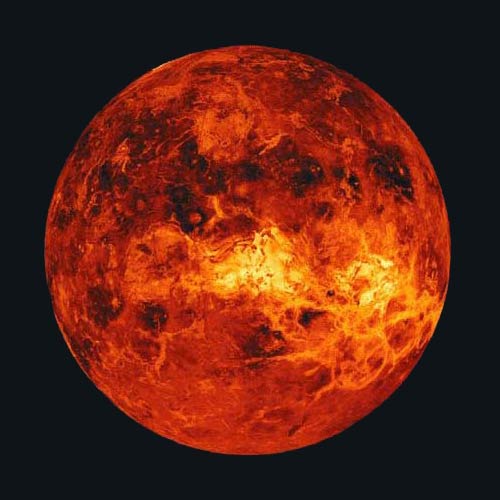New View of Early, Sizzling Mars

Mars, nowcooled into crusty sphere, once sizzled with oceans of magma for millions ofyears. New research suggests it was red-hot tens of millions of years longerthan previously thought.
Rare chunksof Martian rock flung to Earth as meteorites hint at an extended molten status,for which scientists think a thick, early atmosphere was responsible.
"Themost recent physical models for magma oceans suggest they solidify ontimescales of a few million years or less, so this result is surprising,"said Alan Brandon, a geochemist at NASA's Johnson Space Center in Houston.
Brandon,who co-authored the study detailing the new findings in the Nov. 22 issue ofthe journal Nature, said that a crusty surface alone can not explainwhat the Martian rocks reveal.
"Sometype of insulating blanket, either as a rocky crust or a thick atmosphere, isneeded as an insulator to have kept the Martian interior hot," he said.
Brandon andhis colleagues said that understanding how slowly Earth cooled is difficult, asour rocky home continuously melts down its geologic history. Because Mars issmaller andcooled faster, however, it harbors valuable information about the distantpast of planet formation.
"Theserocks were lavas that were made by melting deep in Mars and then erupted on thesurface," Brandon said of nine Martian meteorites his team examined."They were delivered to Earth ? following impacts on Mars that exhumedthem and launched them into space."
Breaking space news, the latest updates on rocket launches, skywatching events and more!
Called shergottites,the rare meteorites were named after the first one that landed in Shergotty, India in 1865. Study co-author Vinciane Debaille, a planetary scientist at theLunar and Planetary Institute in Houston, dated the rocks' radioactive metalsto determine when the fiery entrails of early Mars formed them.
"Weexpected to find that their sources all formed at the same time," Debaillesaid. "But what we found instead was that the shergottite sources formedat two different times."
Sheexplained that the oldest formed 35 million years after the solar system beganto condense from ice and dust into large planets, about 4.567 billion years ago.The youngest formed about 110 million years after planets began to accrete.
Debailleand her colleagues think a global magma ocean existedin the final stages of Mars' formation, then slowly solidified over this timeperiod. To slow that cooling, she thinks an atmospheric blanket once insulatedthe planet.
"Theprimitive atmosphere was composed mostly of hydrogen left over from accretioninto a rocky planet," Debaille said. "But [it] was removed, probablyby impacts, about 100 million years after the planet formed."
- Gallery: Visualizations of Mars
- Video: Mars Landing Sites Scouted
- Image: A Great Volcano on Mars
Dave Mosher is currently a public relations executive at AST SpaceMobile, which aims to bring mobile broadband internet access to the half of humanity that currently lacks it. Before joining AST SpaceMobile, he was a senior correspondent at Insider and the online director at Popular Science. He has written for several news outlets in addition to Live Science and Space.com, including: Wired.com, National Geographic News, Scientific American, Simons Foundation and Discover Magazine.
